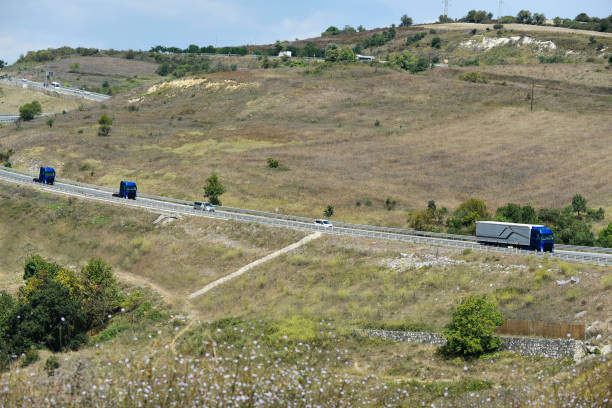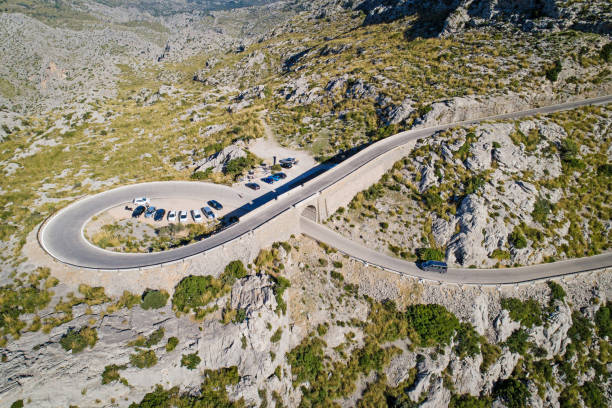Civil Engineering Contractors Association (CECA) for Scotland chief executive Grahame Barn has branded Transport Scotland as the “worst” client body to work for in the UK over the lengthy delays to the A9 dulling project. In its evidence to the to the Citizens Participation and Public Petitions Committee of the Scottish Parliament, Barn has said that the bespoke contract arrangements devised by Transport Scotland are widely regarded as a “dated, unattractive anomaly by the market”. According to Barn, the construction industry has moved to using the “New Engineering Contract” – known as the “NEC Contract” – which was first published in 1993 but Transport Scotland has not adopted this. The NEC was a radical departure from existing building and engineering contracts such as that still favored by Transport Scotland. The industry association has also argued that many of Transport Scotland’s road projects have been bogged down in litigation. In his submission Barn said: “Too many recent Transport Scotland road projects have become adversarial with claim and counter claim taking up time, money and energy at the end of the contract. A change in culture by the client to move from the present behavior of disengagement during the contract period to one of collaboration will result in better outcomes for all parties. “Transport Scotland’s desire to continue to specify their bespoke contract – and its inherent unfairness against the contractor – has resulted in fewer contractors viewing Transport Scotland opportunities as being attractive to bid.” The dulling of 128km of the A9 from Inverness to Perth is a £3bn project divided into 11 sections. The 7.5km Kincaid to Dalriada section was opened in 2017, while the 9.5km Luncart to Pass of Birnam section was completed by Balfour Beatty in 2021 but the rest remain “in preparation” according to Transport Scotland. Citing the A9 as an example of the dysfunctional contract arrangements, Barn said that it was obvious for some time that the initial project deadline would not be met.

“The Civil Engineering Sector in Scotland – Contractors And Consultants.
have known for many years that the promise to dual the section of the A9 between Perth and Inverness by 2025 would not be met,” Barn said. “Only two out of the 11 identified sections of the A9 have been completed in the twelve years since the commitment was made by the Scottish Government in 2011 to dual the A9 between Perth and Inverness. “The pace at which design and development work and subsequent road orders for each of the eleven sections has been carried out can be best described as being glacial. There is a suspicion amongst contractors that this slow pace has been deliberate as there has been insufficient budget allocated to allow these sections to be procured.” In April Transport Scotland launched a series of industry engagements ahead of the procurement of the procurement of the A9 Tomatina to Moy dulling contract. The 9.6km section between Tomatina and Moy was supposed to be next to get underway, with procurement having started in March 2021. In addition to the widening work, the £115M contract included construction of 3.3km of local link roads, one grade separated junction and four other junctions, as well as significant earthworks, drainage and environmental mitigation elements. The scheme will also include construction of the Dalmagarry Bridge to carry the new dual carriageway over a 670m length of the Dalmagarry Burn, plus a new rail bridge over the Highland Main Line Railway. Preparatory works for the upgrade were carried out by Bam Nuttall, Atkins, Mouchel JV on behalf of Network Rail and in coordination with Transport Scotland in November 2021. The contractor took possession of the railway to carry out a box-slide of a new bridge on the Highland Main Line, but during the same 78 hour period installed a 1200mm by 800mm pre-cast box culvert and a 900mm twin wall plastic culvert under the track at two locations as part of the preparation work for the A9 upgrade.

In Response To Barn’s Comments, a Spokesperson For.
the Scottish Government said: “We remain firmly committed to completing the dulling of the A9 between Perth and Inverness. The £3bn investment (at 2008 prices) to dual the A9 between Perth and Inverness is one of the biggest transport infrastructure projects in Scotland’s history. We have already invested over £430m delivering the programmed with road users already benefiting from the dulled sections between Kincaid and Already and Luncart and the Pass of Birnam. This investment has been made alongside the successful delivery of numerous other significant investments by this government including the Queensferry Crossing, AWPR and M8/M73/M74 Motorway Improvements Project. A Scottish Government spokesperson said: “Transport Scotland has a long record of successful procurement which balances the need to attract competition from the market place with protecting the public purse. While the design and build works contract has been successfully implemented for over 20 years, they do acknowledge that recent years have seen a decline in the number of tenderers, in part due to the terms and conditions set out in the contract, including risk transfer. “A market engagement exercise has been undertaken with industry partners, including CECA, to consider changes to better reflect current market conditions and risks to maximize interest and competition ahead of the new procurement for the A9 Dulling: Tomatina to Moy project. “Transport Scotland welcomes CECA’s contribution as an interested party as it considers the most appropriate approach to balancing the need to generate effective tender competition with the importance of protecting the public purse. This is a complex process, and we need to carefully guard against any unintended consequences.”


Recent Comments